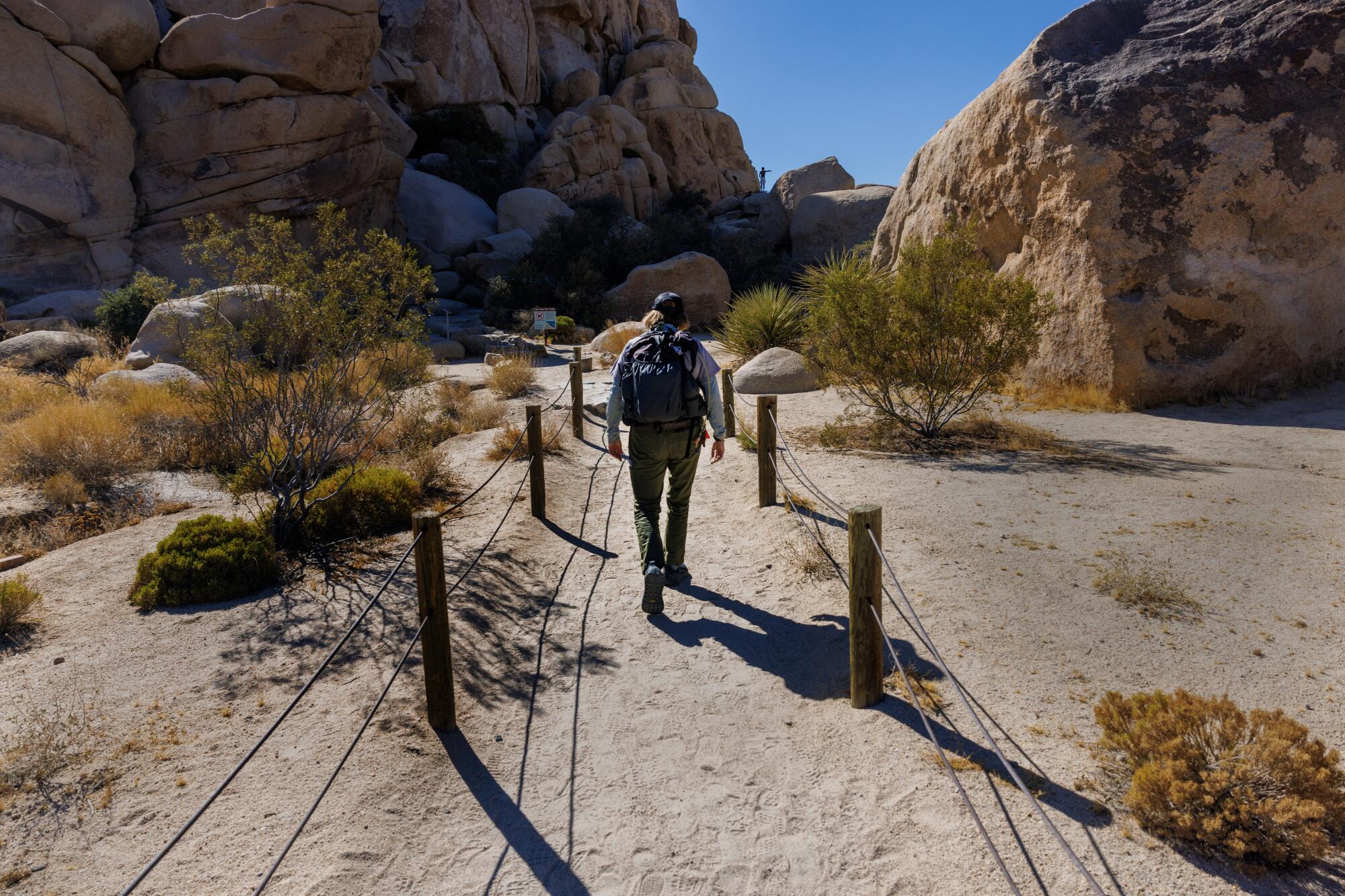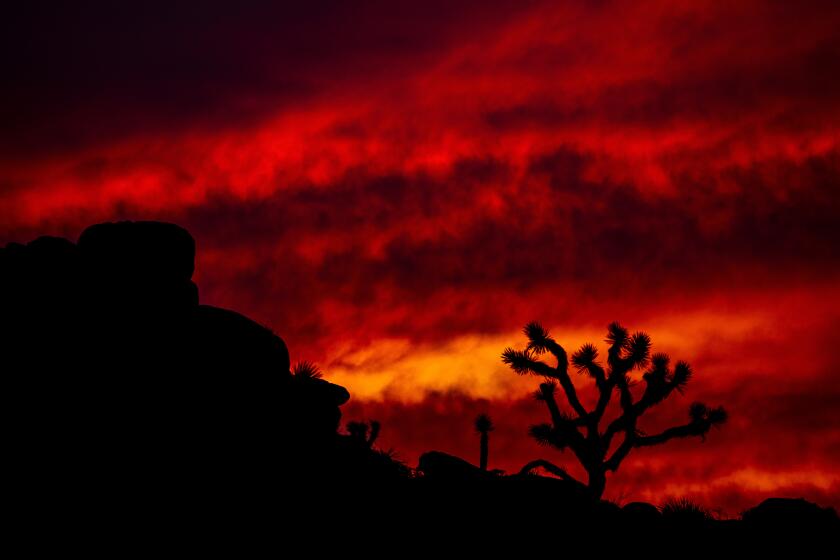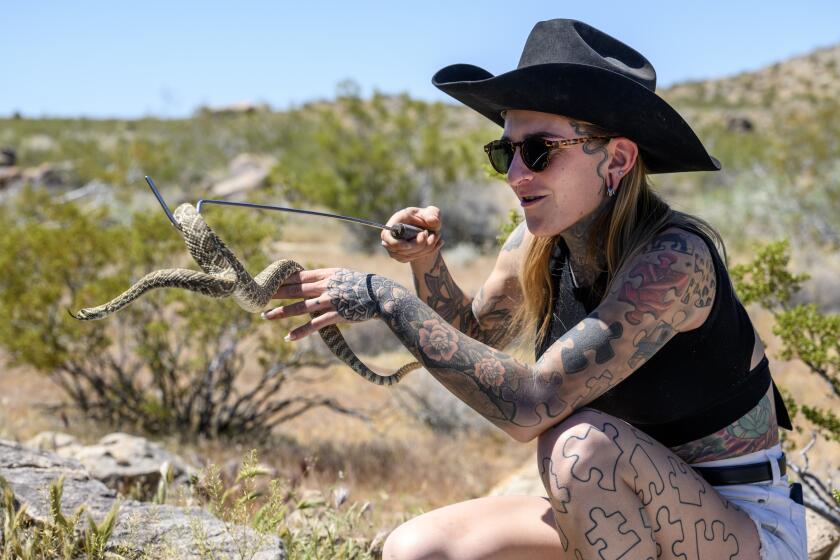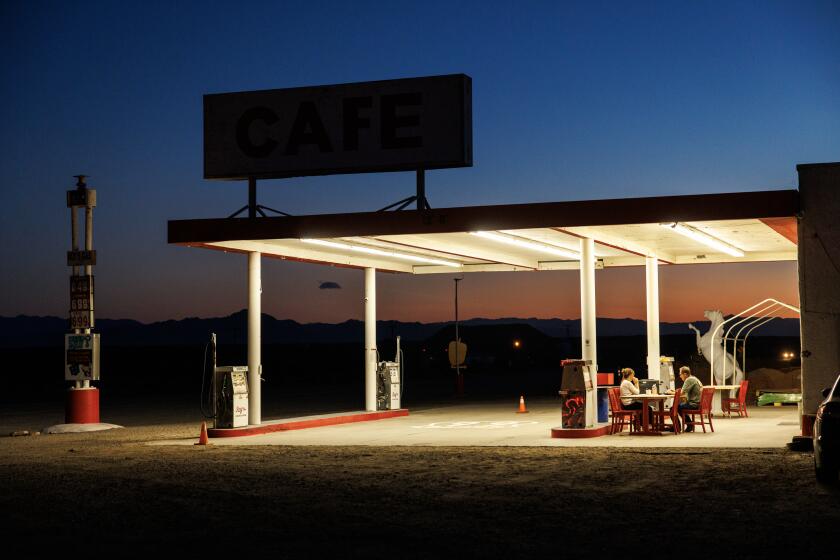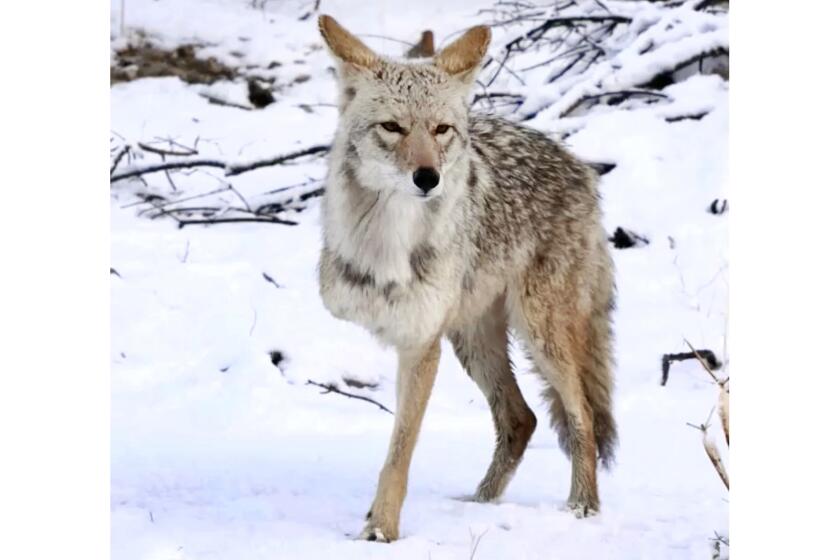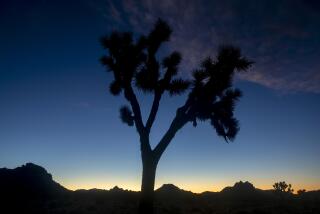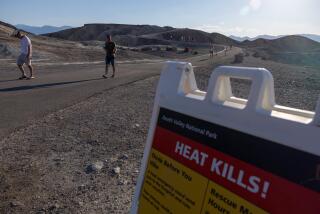
JOSHUA TREE, Calif. — It’s 4 p.m. in Joshua Tree National Park and the air temperature is hovering around 99 degrees — relatively mild for an August afternoon. But at ground level, the sand along the popular Hidden Valley Nature Trail has reached a scorching 136.
“I don’t want my bare feet on that,” says ranger Anna Marini as she shows her thermometer gun reading to a couple visiting from Switzerland, who are appropriately awed.
Marini uses the tool as a prop to engage hikers traversing this surreal desert wilderness that’s roughly the size of Rhode Island. As the coordinator of the park’s Preventative Search and Rescue Program, her mission is to protect visitors from hazards that include extreme heat, razor-sharp cacti and thirsty bees. Hopefully, parkgoers will learn enough to avoid stumbling into a predicament that requires an emergency response.
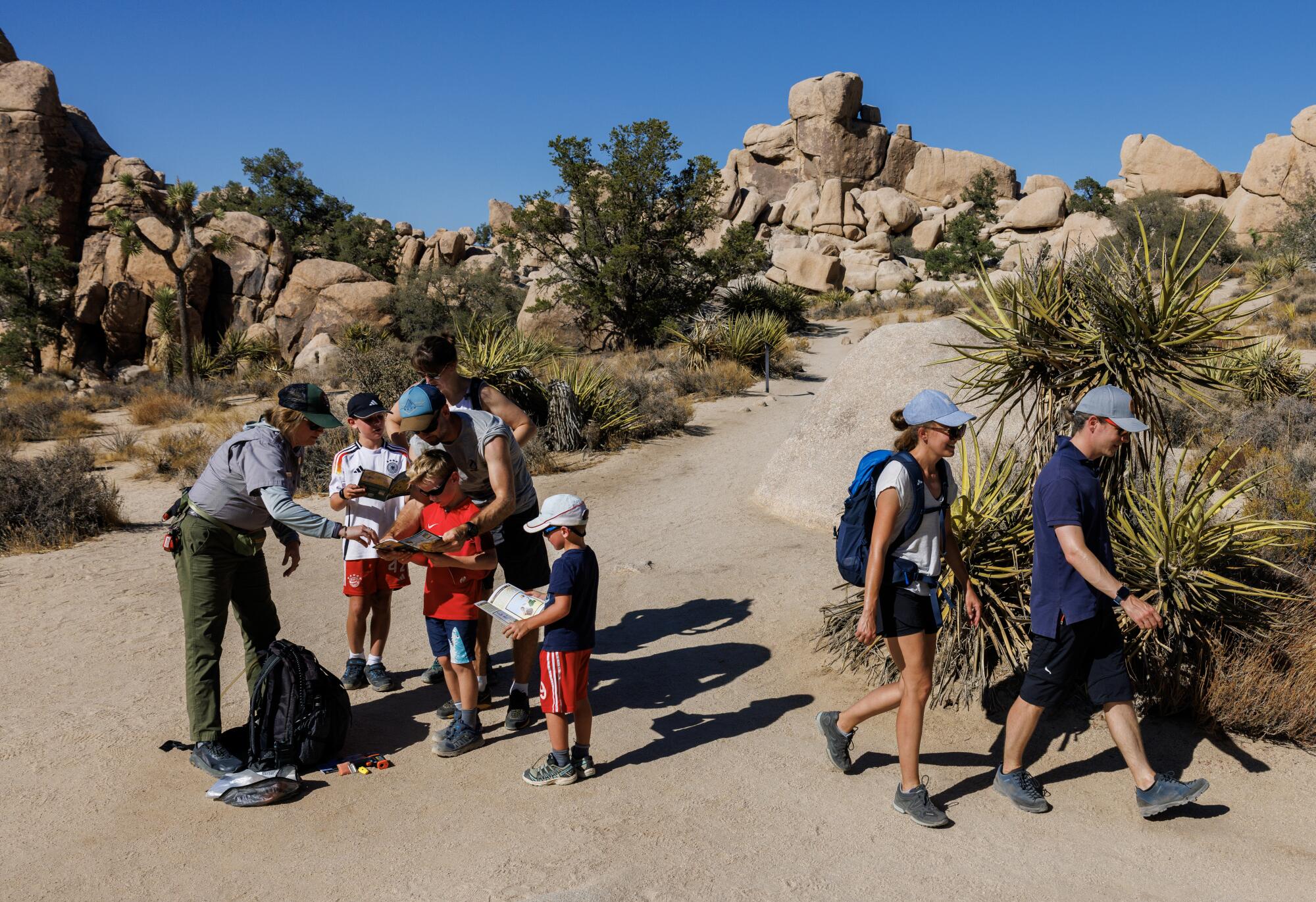
“Everything I do is usually just a friendly conversation, with an air of warning in the back,” says Marini, who founded the PSAR program in 2021.
With visitation surging at national parks in recent years, site managers have come to rely on a mix of signage, social media posts and on-the-ground outreach campaigns to help keep visitors safe. Fifteen parks now have official PSAR programs, and at least 30 more are either considering one or in the process of starting one.
The efforts may be working: The number of national park search and rescue operations — which can entail anything from a child who becomes separated from their parents to a hiker who disappears in the backcountry — have ticked downward nationwide, from 5,395 in 2016 to 3,308 last year, even as visitation has continued to rise.
Planning a visit to Joshua Tree National Park? Here’s when to go, what to bring and how to avoid some common hazards and pitfalls.
The idea of a search and rescue team focused solely on prevention was pioneered at the Grand Canyon, where people tend to hike to the bottom of the sweltering chasm and then struggle to make it back up. Marini served as second in command of that program, where she learned how to use data to identify areas where people are prone to getting sick, injured or lost.
“Grand Canyon was doing a great job of that, knowing that about 3, 4 o’clock in the afternoon, three miles down on the Bright Angel trail, everybody’s throwing up,” she said. “It’s the worst time. They’ve been hiking too long. So they send somebody out there at that time.”
Marini is gathering similar statistics for Joshua Tree, the second national park to have a formalized PSAR program overseen by a dedicated ranger.
She’s learned that Hidden Valley is a hotspot for sprained and broken ankles — “those rocks on the trail just kind of come out of nowhere for people” — and confusing junctions of the sandy Split Rock trail can result in people veering off course. Hikers can also get disoriented when traveling the Barker Dam loop because the main attraction is often bone dry.
“I’ve talked to countless people that don’t realize that they saw the dam,” Marini said. “Because they think of Niagara Falls, you know, those big huge water sources. That’s not what we have.”
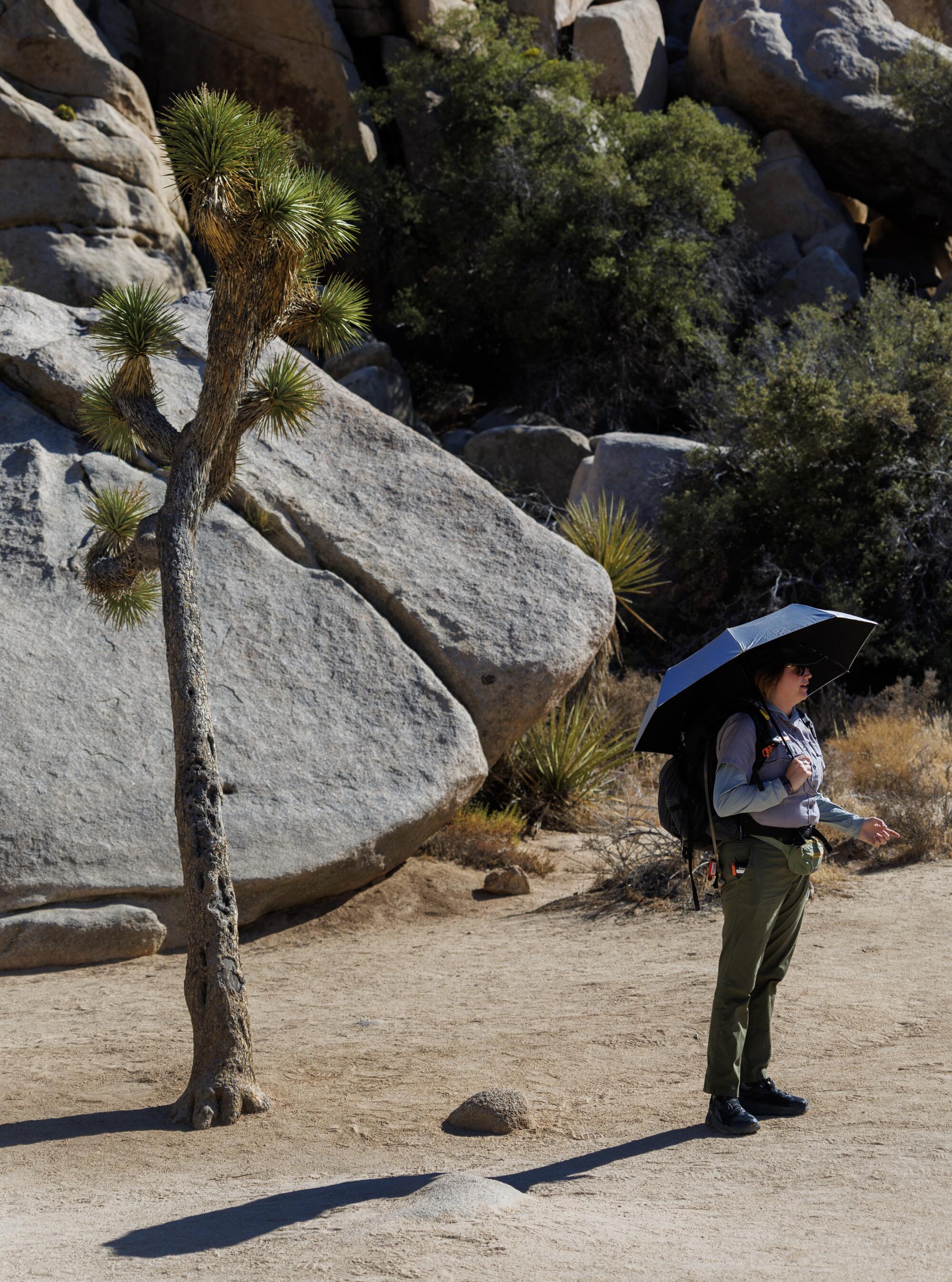
Marini and her team of 30 volunteers fan out across the park’s popular trails to talk to people about where they’re headed and what they hope to see. They may recommend alternatives — a shorter route, a better time of day to venture out — or offer up safety tips: Seek shade if your shadow is shorter than you are, drink at least a gallon of water each day. They also collect data about when hikers tend to be active, what can go wrong and what time they are most likely to need help.
Each member receives extensive training on everything from operating a radio to tracking footprints. Some are also qualified to help with rescues and provide emergency medical care.
The volunteers may also issue warnings about the many hazards that lurk in desert areas: Rattlesnakes, while not aggressive, tend to blend in with the rust-colored sand and boulders. And spines can become lodged in people’s skin if they so much as brush against a cholla. “A lot of people test the cholla, like, ‘Is it really painful?’” Marini said. “And then it is.”
No. 1, though, is the heat. This summer was particularly brutal. Although official data remain to be tallied, the park appears close to breaking some temperature records, Marini said. “For a while there it seemed like it was 111 to 118 for quite a few days in a row,” she said.
Of the 70 to 80 search and rescue operations park staff perform each year, 10 to 15 tend to be heat-related, she said.
“We are kind of slowly shrinking those numbers with PSAR,” she said, although for now the evidence of that is largely anecdotal. “That’s going to take a couple more years of data to really show that it’s the program.”
A new study reveals that the icons of the Mojave Desert are experiencing much different conditions from what they had in the early 20th century, and that those conditions are changing the frequency of their reproductive activity.
Social media is a big factor driving increased visitation to national parks, according to a study published in the Proceedings of the National Academy of Sciences.
The study found that while overall attendance has grown dramatically over the past decade or so — from roughly 70 million annual visitors to more than 90 million — that increase has been concentrated in parks with the greatest social media exposure. Parks with low exposure tended to have no change in visitation, or a decline.
It’s no surprise then that Joshua Tree — a favorite of influencers drawn by Instagrammable boulder piles and cactus gardens — has seen an especially pronounced jump, with annual visitation more than doubling, from nearly 1.4 million in 2013 to nearly 3.3 million in 2023. The study ranked Joshua Tree as the park with the sixth-highest social media exposure.
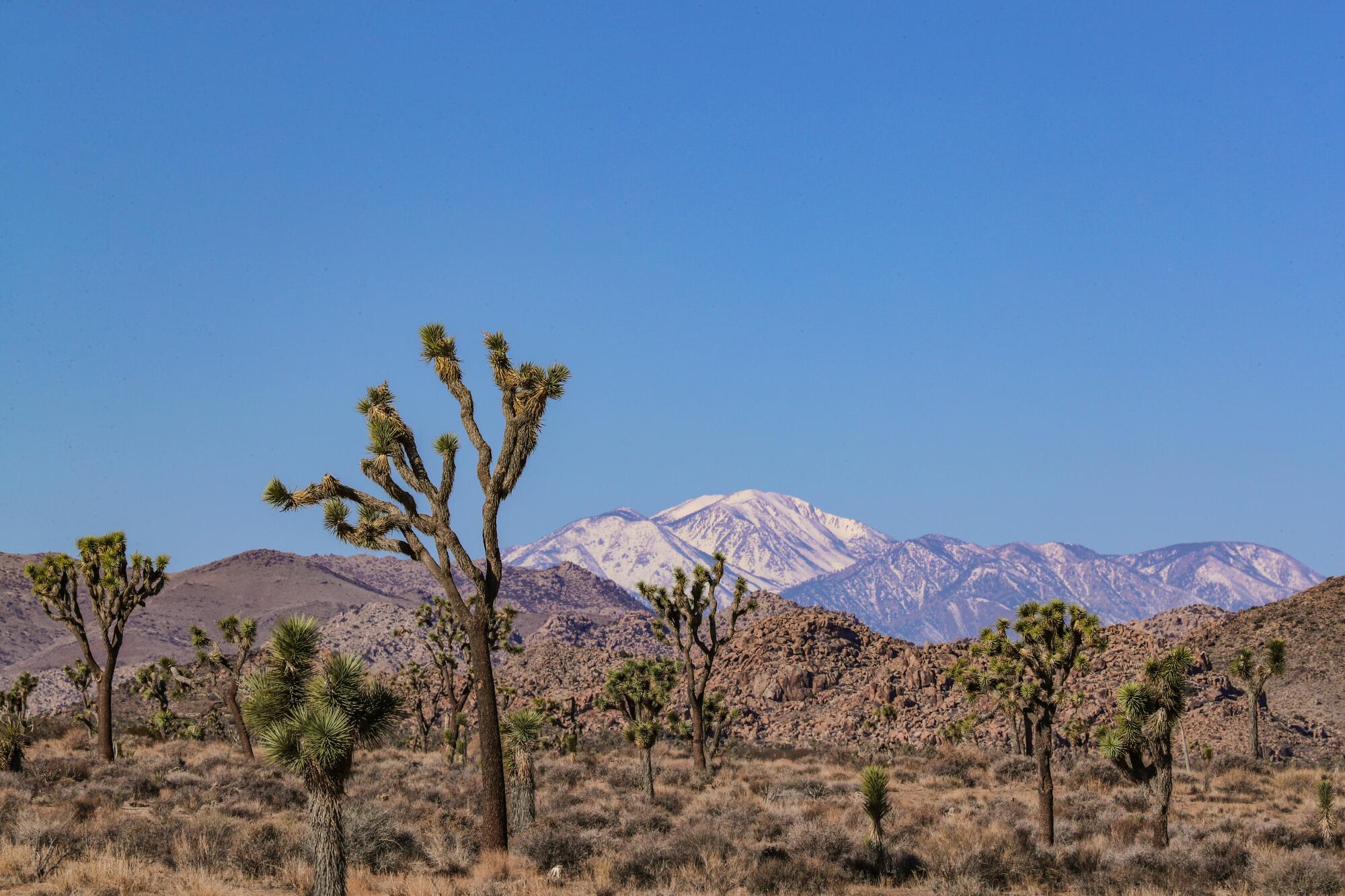
“Some of the parks that saw the biggest increases were also the ones with these scenic vistas that were relatively close to big population centers,” said study author Casey Wichman, an associate professor at the school of economics at Georgia Tech. “And I think this is one of the reasons Joshua Tree sees such a big increase in visitation, relative to its baseline levels. It’s a very otherworldly landscape that lends itself well to social media, because you get these crazy images of rocks and Dr. Seuss-looking trees, but it’s also only a two-hour or so drive from L.A.”
More of these visitors have been coming in the summer months, according to Marini. While she welcomes the influx, it also exposes people to high temperatures they’re not acclimated to, making her work all the more necessary — and keeping her volunteers very busy.
During the last fiscal year, her team logged 3,100 volunteer hours, spoke with more than 83,700 visitors and took more than 13,200 “preventive actions” — interventions that helped to change someone’s risky behavior.
The effort earned Marini a Park Service award recognizing her outstanding contributions to visitor safety. She recently traveled to Washington, D.C., where she was feted at a ceremony at which she accepted a bronze bison statue.
Danielle Wall has transformed how locals interact with rattlesnakes. Her work has earned her a front-row seat to reshaping of California’s High Desert.
Back at the trailhead, Marini double checks her supplies: an EMT kit with medical tools like a CPR mask and automated external defibrillator; a backpack with a personal first aid kit; water; a sun umbrella and an emergency blanket. She also carries extra layers of clothing to buffer against the fickle weather — summer monsoons can descend with little warning — multiple thermometers, including one that uses the Celsius scale so she can explain the heat to guests from other countries and salty snacks to hand out to thirsty hikers. (Salt helps the body to retain water and replace electrolytes.)
And then there are the thirsty bees. The parking lot is thick with them. They are looking for water — whether it’s from the restrooms that were recently hosed down, sweat pooling on tourists’ skin, or the condensation dripping from car air conditioners.
“We have a bee bucket out, just back behind there,” Marini says, pointing to a patch of scrub. “They fill it up every day. It does pull the bees away but there’s still so many of them.”
Amboy has been beset by a series of crises that stretch back more than half a century. But owner Kyle Okura hopes to turn it around. No less than his father’s legacy is at stake.
She pauses at the edge of the stone steps leading to the trail to point out a sign that reads, “Do Not Die Today” and suggests tips to avoid that fate. Her team is behind the blunt messaging, which has become popular to share on social media, she says proudly.
“Even if they think it’s a joke and they’re putting it online, I think that’s great,” she says.
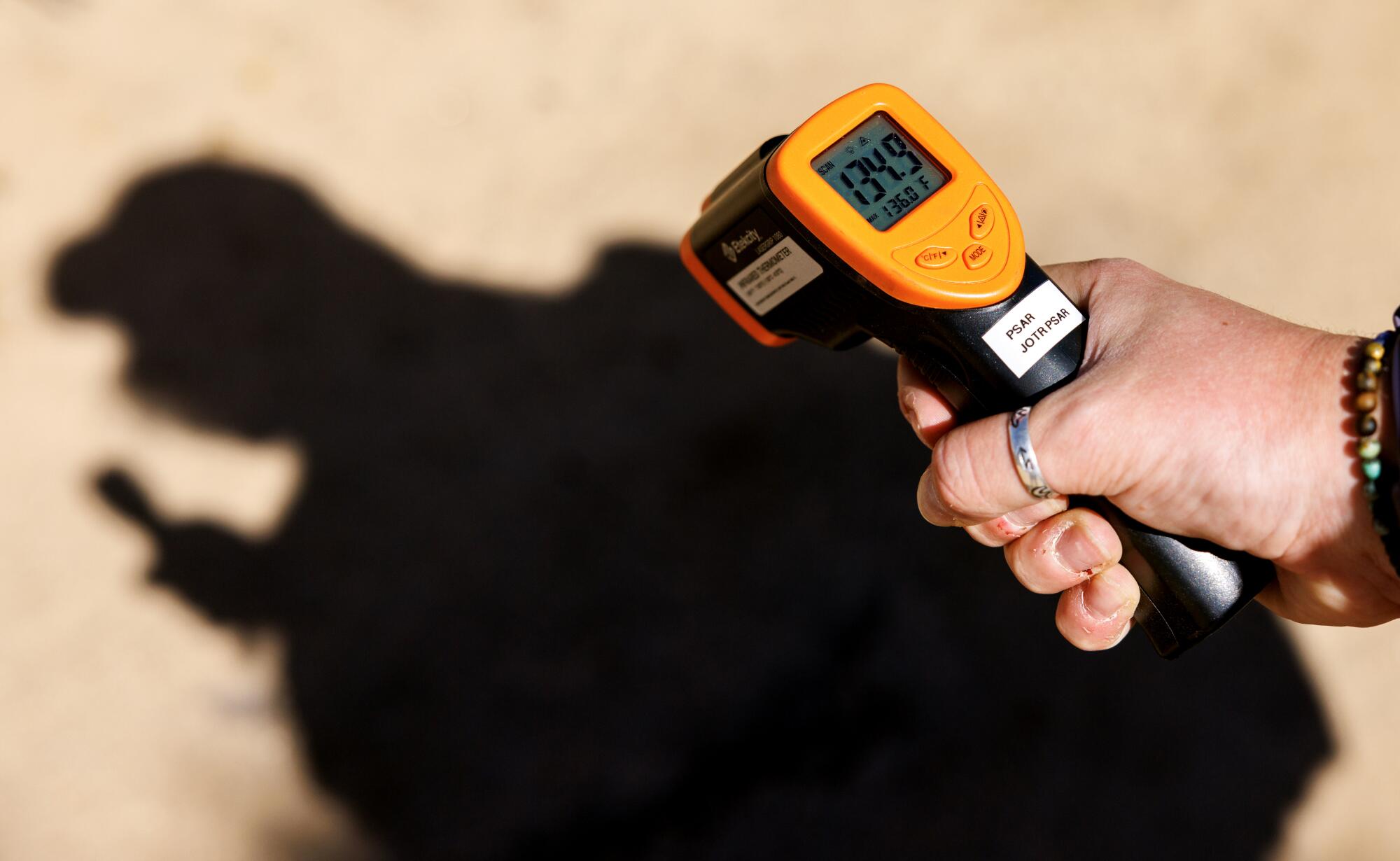
Not far from the sign, Marini walks through a narrow opening in a stack of boulders — a tight squeeze when rescuers are carrying someone out on a stretcher. She stations herself on a stretch of trail that’s lightly shaded by pinyon pines. Two shirtless men perched on a rock wall scramble in the opposite direction.
A family of German tourists rounds the bend. Marini whips out some junior ranger books that depict local wildlife and feature a scavenger hunt that can be completed to earn a badge.
“Did you see any of these?” she asks Niklas, 10, Robin, 7, and Leon, 5. The boys point out a lizard, an antelope squirrel and a Joshua tree.
For their mother, Michaela Lutter, the education is a little much. The family is staying overnight in the campground, and she doesn’t appreciate learning there are tarantulas.
“I didn’t want to know this one,” she says with a laugh.
Everybody loves Tripod the three-legged coyote, but High Desert locals say that visitors are spoiling the beast with handouts and causing a dangerous situation.
Her husband, Clemens Lutter, tells Marini the family is planning to head to Barker Dam tomorrow. She suggests they start earlier, when it’s cooler. They ask why she’s wearing long sleeves. She tells them her sun hoodie provides more UV protection than sunscreen and keeps her skin cool.
For the evening, she suggests they drive up to Key’s View and watch the moonrise — “it’s going to be beautiful, huge.” For stargazing, Jumbo Rocks is an ideal spot, she says.
But Michaela still has a lingering question: “What about the spider?”
The interaction captures Marini’s style, and the ethos she tries to instill in her volunteers, she says later. “I find that just doing a warning doesn’t come off in a friendly way or receptive way. Trying to have that conversation and being interested in their trip, which I genuinely am, really helps change people’s minds.”
